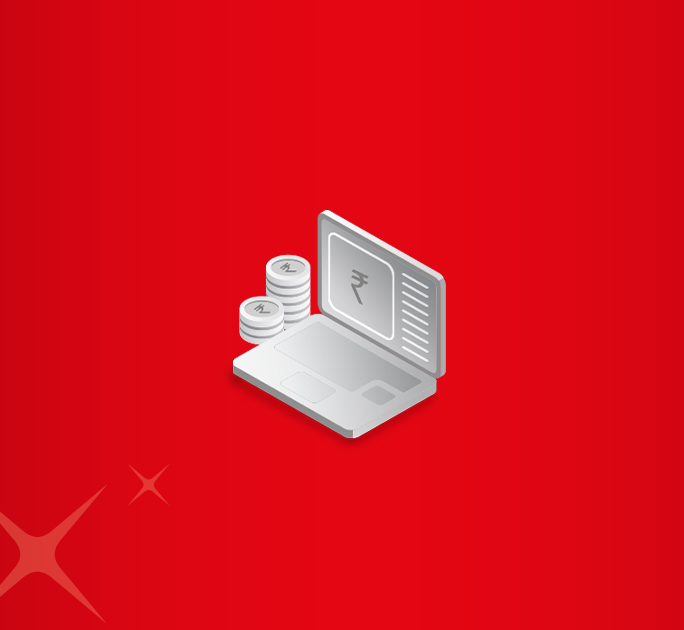- Save
- Invest
- Borrow
- Pay
- More
- Customer Services
Short-Term Vs. Long-Term Fixed Deposits - Key Differences
Navigating the complex world of fixed deposits (FDs) can seem daunting, but having a clear understanding of their mechanisms can significantly improve your financial strategy. Fixed deposits, known for delivering secure and guaranteed returns, come in two primary forms: short-term and long-term.
Each type caters to different investment needs and financial objectives. In this article, we'll delve deeper into these fixed deposit options to help you decide which one best aligns with your financial aspirations.
Short-Term Fixed Deposits
Short-term fixed deposits typically have tenures ranging from 7 days to one year. These deposits are optimal for individuals seeking quick returns and greater liquidity.
Advantages of Short-Term FDs
- Liquidity: Short-term FDs provide easy access to your funds upon maturity, which is beneficial for short-term goals, such as traveling or meeting unexpected expenses.
- Responsive to Rate Changes: Given their short durations, you can frequently reinvest to take advantage of favourable shifts in interest rates, thereby capitalizing on the best short term fixed deposit rates available.
Also Read:- Fixed Deposit Minimum Period
Important Things to Consider
- Lower Interest Rates: These deposits generally offer lower interest rates compared to long-term alternatives.
- Frequent Management: Regular renewal is required, which might involve some administrative efforts and the risk of reinvesting at potentially lower rates if market conditions change.
Long-Term Fixed Deposits
Conversely, long-term fixed deposits are held for periods ranging from one year up to ten years. This type of FD is suitable for individuals focused on long-term financial foresight and wealth accumulation.
Benefits of Long-Term FDs
- Higher Returns: Long-term FDs typically offer more attractive FD interest rates, leading to significant growth over time due to the power of compound interest.
- Stability and Predictability: These deposits provide financial predictability, offering a steady income stream, which is advantageous for retirement planning or long-term savings.
Important Things to Consider
- Reduced Liquidity: Funds are inaccessible for longer, and early withdrawals often incur penalties, potentially affecting financial flexibility.
- Interest Rate Risk: Locking into a long-term FD could result in missed opportunities to benefit from rising interest rates after your investment has been secured.
Short-Term vs. Long-Term FDs: A Comprehensive Comparison
Short-term FDs are ideal for those who prefer flexibility and anticipate needing access to funds soon, while long-term FDs are suited for individuals focused on accumulating wealth over time with higher returns.
By understanding the advantages and potential challenges of each option, you can align your fixed deposit strategy to balance access to funds and interest earnings effectively.
|
Feature |
Short-Term FD |
Long-Term FD |
|
Duration |
7 days to 1 year |
1 year to 10 years |
|
Interest Rates |
Lower |
Higher |
|
Liquidity |
High, with easy access to funds |
Limited, due to long lock-in period |
|
Ideal for |
Short-term financial goals |
Long-term financial security |
|
Flexibility |
Can adjust with market changes |
Locked-in rates prevent changes |
|
Risk |
Minimal market risk, interest rate fluctuation opportunities |
Possibility of opportunity risk if rates rise |
Also Read:- What is tax saver fixed deposit
How to Maximize Your Fixed Deposit Investments
At DBS Bank, we comprehend the varied financial aspirations of our customers. Our wide-ranging fixed deposit options are crafted to meet your unique needs, whether short-term or long-term.
- Tailored Solutions: Access competitive interest rates designed to align with your investment horizon and financial objectives, maximizing the benefits of both short-term FD and long-term FD investments. Use our FD Calculator to help you decide how much you wish to save and for how long it would take to achieve your desired financial returns.
- Seamless Digital Experience: Manage your FDs effortlessly with our intuitive digital platform, the DBS digibank app, which provides comprehensive control over your financial planning process.
- Security and Trust: As a reputable institution, DBS Bank guarantees the safety and security of your investments, delivering peace of mind while you grow your wealth.
Deciding the Best Path Forward
When deciding between short-term and long-term fixed deposits, evaluate your immediate financial goals, liquidity requirements, and the broader market outlook. Short-term FDs cater to those seeking swift access to funds or looking to ride on fluctuating interest rates for better returns. Meanwhile, long-term FDs promise higher returns and stability, supporting plans like long-term investments or retirement savings.
For investors aiming to reap varied benefits, consider a diversified approach. By spreading your investments across both short-term and long-term FDs, you can enjoy the liquidity of one and the higher returns of the other, effectively guarding against market volatility.
Also Read:- Fixed Deposit Trends That Everyone Should Know About
Conclusion
DBS Bank enables you to make the most informed choices regarding short term FD and long-term FD investments. Our dedication to your financial success ensures that you receive personalized support and comprehensive solutions, tailored to your goals.
From fixed deposit to savings account, choose DBS Bank as your trusted partner and take confident strides towards a secure economic future. Reach out to us today to explore how our fixed deposit, recurring deposit and savings account offerings can serve your individual financial needs and help you build a prosperous tomorrow.





